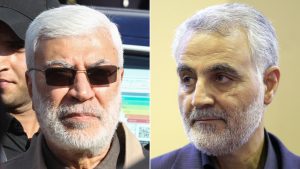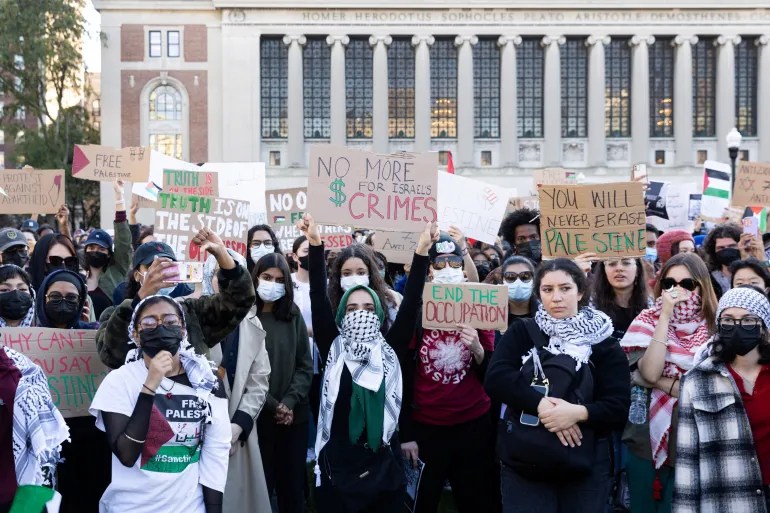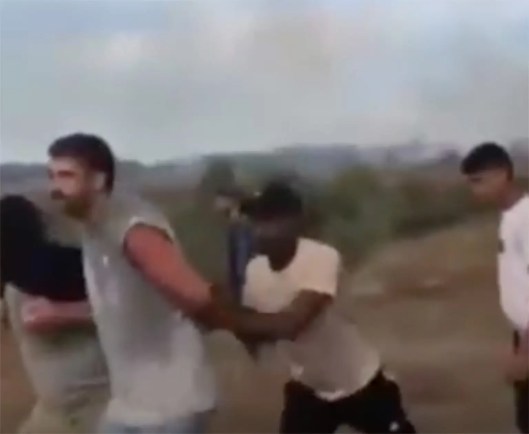
Redux: The Wizard is still dead, but the world has fallen apart
The piece below first ran four years ago tomorrow, January 4, 2020. Four years ago today, January 3, 2020, Donald Trump ordered a drone strike to take out the mastermind of Iranian terrorism in the Middle East, Maj. Gen. Qadam Soleimani. The dire predictions of the naysayers at the time never came to pass, and in recent decades the world has never been more secure than it was on January 4, 2020.
Compare the world on the day after Soleimani’s assassination with the world today. Afghanistan was not run by the Taliban terrorists. Putin’s Russia had not launched its murderous invasion of Ukraine. Hamas had not conducted its vile rape and slaughter of innocent Israelis, and Israel had not been forced to root out the Hamas terrorist leadership through a brutal war in Gaza. The Houti rebels in Yemen, inexplicably removed by Biden from the terrorist list, were not attacking civilian shipping or U.S. naval vessels in the Red Sea. The Abraham Accords were in process to bring peace to the Middle East. China was not openly talking about invading Taiwan. North Korea was talking more and flexing its threatening muscles less. And a villainous Iran was largely contained.
In the three years that the feckless Joe Biden has been in office, all that has been undone, and the world is arguably in a more perilous state than it has been since at least the end of the Cold War. Extending the weakness of the Obama years, with the same misguided so-called “security” team pushing Biden’s buttons, the U.S. has lost its hard-won position as the ornery bear the bad actors of the world were afraid to poke.
The bombings in Iran today that killed more than 100 and injured more than 200 of those going to pay their respects to the deceased Soleimani have all the marks of a terrorist attack. Ex-CIA officer Daniel Hoffman, in an interview earlier today with radio and TV personality Brian Kilmeade, expressed the view that it was probably either al Qaeda or ISIS, both Sunni terrorist groups, providing pay back to Shiite Iran. The internecine tit-for-tats go on as a subset of the bigger world conflicts. It’s not just the U.S. or the West that have legitimate scores to settle with Iran.
It’s more than sad, but extraordinarily tragic and costly in lives and peace, that the lessons of the Soleimani assassination have been forgotten or, more to the point, never learned by the appeasers of this administration. Sensible people can draw comparisons between what works and what doesn’t. But blinded by their ideology and a misguided world view, these people never learn.
Here is my piece from January 4, 2020:
Ding-Dong! The Wizard is Dead
In the 1939 classic film The Wizard of Oz, the Wicked Witch of the East is killed when Dorothy’s house, spirited off to Oz from Kansas by a cyclone, lands on her. In 2020 real life, the Wicked Wizard of the East, Iranian Maj. Gen. Qasam Soleimani, was killed when he came into the crosshairs of an American drone flying over Baghdad’s international airport in Iraq. Ding-dong! The wizard is dead.
As the Munchkin Coroner states in the 1939 film, “As Coroner, I must aver I thoroughly examined her, and she’s not only merely dead, she’s really, most sincerely dead.”
Ditto for Soleimani.
Just as the Munchkins rejoiced at seeing the wicked witch’s stockinged feet protruding from under Dorothy’s transplanted house, there is grounds to celebrate the demise of Soleimani, the head of Iran’s deadly Quds Force. Unfortunately, the figurative kingdom is rife with naysayers and handwringers, and political divisiveness seems ever-ready in contemporary America to overcome any shared sense of victory.
While it is Pollyannish to expect that there won’t be some consequences in the targeting of Soleimani, regarded as the second most powerful figure in Iran’s arcane political structure, it is just as Pollyannish to think that there wouldn’t be consequences were he still alive and having breakfast this morning on Al Rasheed Street in downtown Baghdad.
The havoc and death wreaked by Soleimani stretches back four decades to when, in 1979, he joined the Islamic Revolutionary Guard Corps (IRGC) following the Iranian revolution and, beginning in the Iraq-Iran War of the early 1980s, he rapidly advanced within the hierarchy. In 1998 he took over command of the Quds Force, designated a terrorist organization by the State Department. Sometimes called “the world’s number one bad guy,” consider these feats of Soleimani and the Quds Force he headed:
- Assisting Syria’s Assad regime repress its own people, resulting in the deaths, injuries, and torture of hundreds of thousands of civilians – including tens of thousands of children – in that country’s ongoing civil war, now in its ninth year;
- Helping foment the rebellion by Yemen’s Houthi Movement, involving the country in the proxy war between Saudi Arabia and Iran and driving the already impoverished country further into chaos and destruction and leading to the deaths of more than 100,000 civilians;
- Targeting Iranian dissidents overseas, including 3,000 taking shelter in Albania, and across Europe, killing Iraqi demonstrators protesting Iranian influence in their country, and reinforcing the repression of the Iranian population over decades;
- Attempting to assassinate the Saudi ambassador in Washington, and orchestrating terrorist attacks in a number of countries, including Georgia, India, Thailand, and Kenya;
- Killing at least 603 American troops in Iraq between 2003 and 2011, one-in-six of U.S. casualties in Iraq, and wounding many more, according to State and Defense department estimates, mostly through use of an extraordinarily destructive type of IED called an Explosively Formed Penetrator (EFP) capable of penetrating armored vehicles; this was in addition to thousands of Iraqi casualties caused by IRGC proxies.
Taking out Soleimani wasn’t just a random act. It followed an attack by Iranian-backed Shiite militiamen on the U.S. Embassy in Baghdad on New Year’s Eve, in which the attackers had penetrated the entrance to the compound and burned a reception area. While no one was kllled in the attack, the U.S. responded by sending in 100 Marines to secure the compound, given the failure of the Iraqi government to meet its internationally mandated requirement to protect diplomatic facilities.
There was more involved than the embassy attack, though. Both Secretary of State Mike Pompeo and Joint Chiefs Chairman Mark Milley made it clear that reliable intelligence indicated that a wave of Iranian-inspired terrorist attacks against U.S. assets in the region was being planned and was imminent. And, of course, Soleiman was brazen enough to show up at Baghdad’s international airport, exposing himself to the drone attack that killed him and also Abu Mahdi al-Muhandis, deputy head of the Iran-backed Iraqi Popular Mobilization Forces militia.
“I can’t talk too much about the nature of the threats. But the American people should know that the President’s decision to remove Soleimani from the battlefield saved American lives,” Pompeo told CNN. “The risk of doing nothing was enormous. Intelligence community made that assessment and President Trump acted decisively last night.”
Pompeo said hundreds of American lives had been at risk. He later told Fox’s Sean Hannity that the attack also had saved European lives, though he hadn’t gotten the kind of support he expected from European allies.
“The Brits, the French, the Germans all need to understand that what we did, what the Americans did, saved lives in Europe as well,” he said.
Milley said the U.S. had intelligence that was “clear, unambiguous” that Soleiman was planning a campaign of violence against the U.S., leading to the decision to attack him. Targets included American military outposts in Syria and diplomatic and financial targets in Lebanon.
“By the way, it still might happen,” Milley said.

Iran’s Supreme Leader Ayatollah Ali Khamanei immediately appointed Maj. Gen. Ismail Qaani to replace Soleiman as head of the Quds Force and, predictably, pledged revenge. Qaani said the Quds agenda would remain unchanged.
As predictable as Khamenei’s reaction was, so was the response in Congress, which broke down along party lines. The anti-Trump Dems, for whom the President can do nothing right, were quick to criticize the action, going so far in some cases to say the strike on Soleimani was illegal, though reportedly legal departments at both State and Defense, as well as at Justice, approved the strike.
House Minority Leader Nancy Pelosi complained that Congress hadn’t been consulted on the planned attack on Soleimani – no surprise there, given the tendency of Congress to leak like a rusty old sieve – and she had the temerity to call the killing of the man who had murdered hundreds of thousands of people, including hundreds of Americans, “provocative and disproportionate.”
Meanwhile, not to be outdone, Vermont Senator and Democratic presidential candidate Bernie Sanders called the killing of Soleimani an “assassination” and introduced legislation to block funding of any military action in the region. Most of the other candidates in the race piled on with criticism of the attack.
There was some push back, though, even within the parties. Another Dem candidate, former New York City Mayor Michael Bloomberg, was quick to strike back at Sanders, calling his “assassination” claim “outrageous.”
“If he was talking about killing the general . . . this is a guy who had an awful amount of American blood on his hands. I think that’s an outrageous thing to say,” Bloomberg said. “Nobody that I know of would think that we did something wrong in getting the general.”
While prominent Republicans, including Sen. Lindsey Graham and Sen. Marco Rubio, expressed strong words of support for the attack, another Republican, Sen. Rand Paul, expressing his libertarian view on foreign affairs, said the Trump administration should not embark on a war in the Middle East without Congressional approval.
As the naysaying and handwringing goes on, and will in the days and weeks and more to come, if there is one prediction that will always be correct it is forecasting violence in the Middle East. If that’s anyone’s prediction, they’d be right, with or without Soleimani. In anticipation of Iran’s reaction, the U.S. is sending an additional 3,500 troops to the region. Soleimani may be really, most sincerely dead, but the seething animosities of the region most certainly aren’t, and there are no ruby slippers, like the ones that passed to Dorothy from the deceased Wicked Witch of the East, to magically bring them to a close. So stand by. Film at 11.
Disclosure: The author was an intelligence analyst with the State Department covering the Middle East.
Featured image: Gargoyle, Donovan Reeves, Unsplash, used with permission.
Al-Muhandis and Soleimani images, AFP via Getty, used under Fair Use.
This piece also appears on my Substack, Issues That Matter. Comment, share, and subscribe, here, and there.














